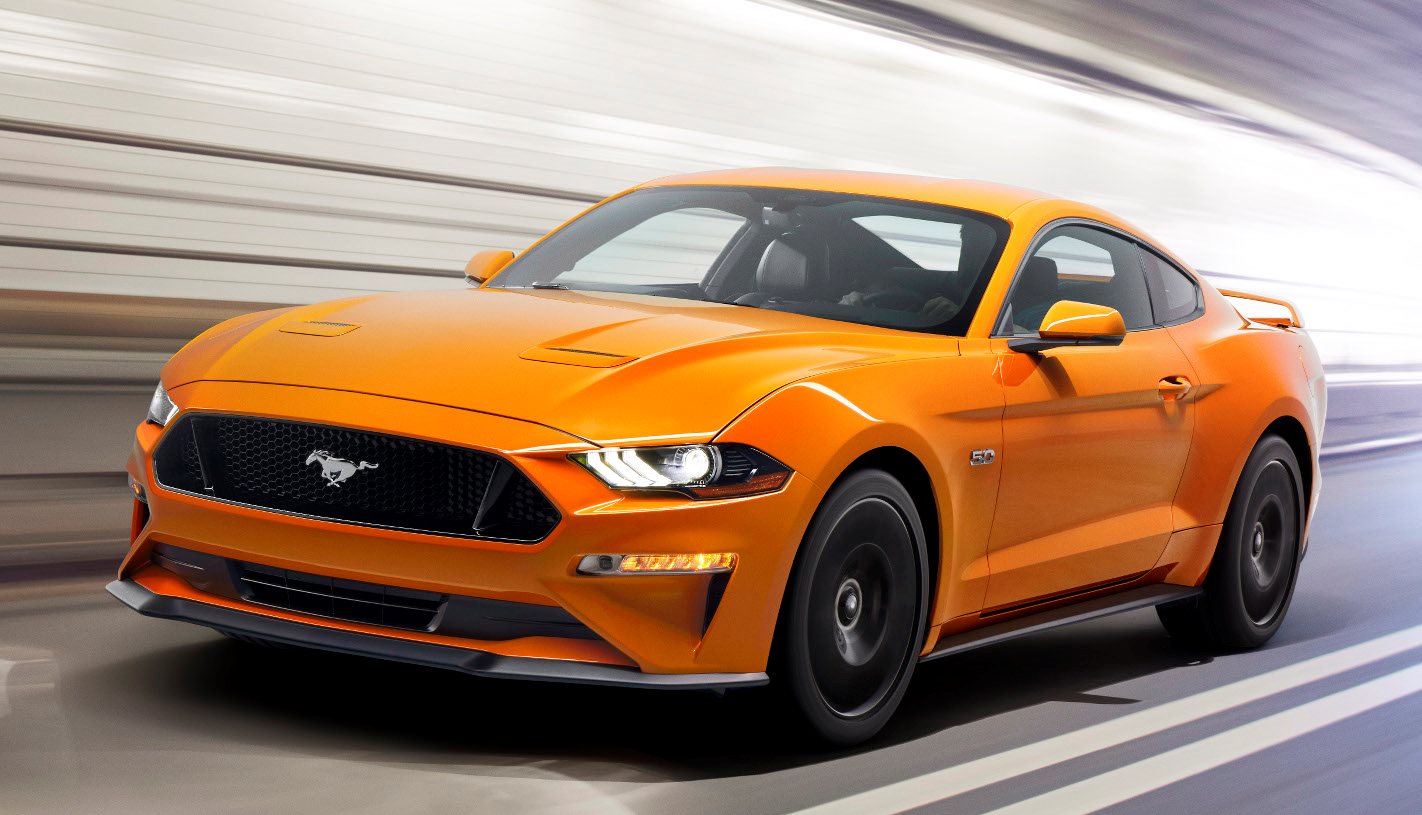AN UPDATE to the Ford Mustang will bring even more performance – and, critically for V8-engined versions, the option of a better sound – as part of running changes to the muscle car announced overnight.
However, it’s going to be a long, long wait for Australian customers as the first deliveries Down Under blow out to 2018 as left-hand drive markets take priority and right-hand drive markets take a back seat.
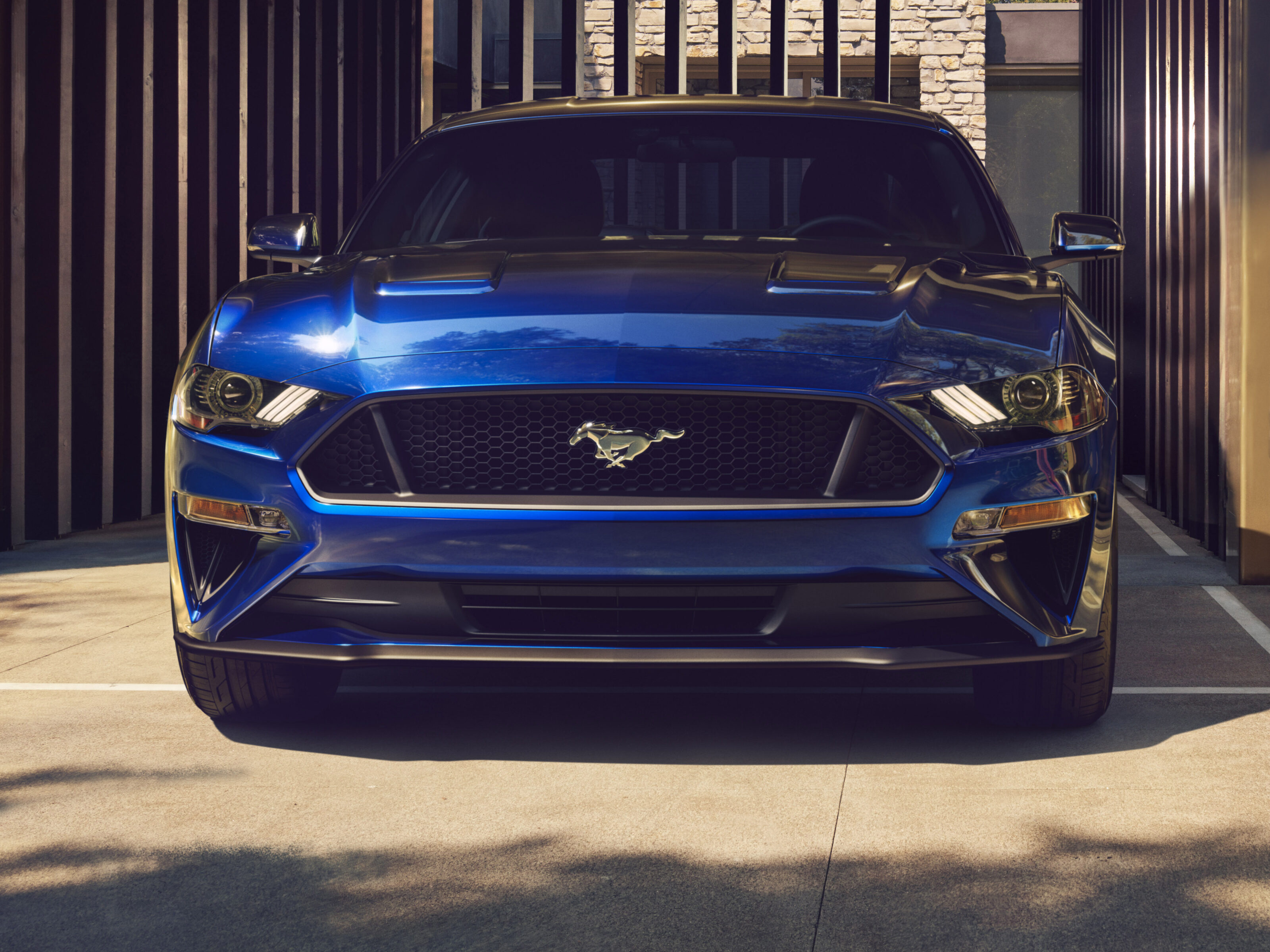
Ford Mustang Hybrid may come to Australia in 2020
Speaking of engines, the V6 offered in other markets will be no more. Instead, the Mustang will add a wider spread of revs to the V8 via dual high-pressure direct injection and low-pressure port fuel injection, delivering what it says is “robust low-end torque, high-rpm power, and improved fuel efficiency”. Ford will also lift the Mustang V8’s compression ratio from 11:1 to 12:1, a move that should add power while squeezing out better fuel economy. It also adds the option of an active exhaust that adds a deeper growl to the bent-eight’s tailpipe tone.
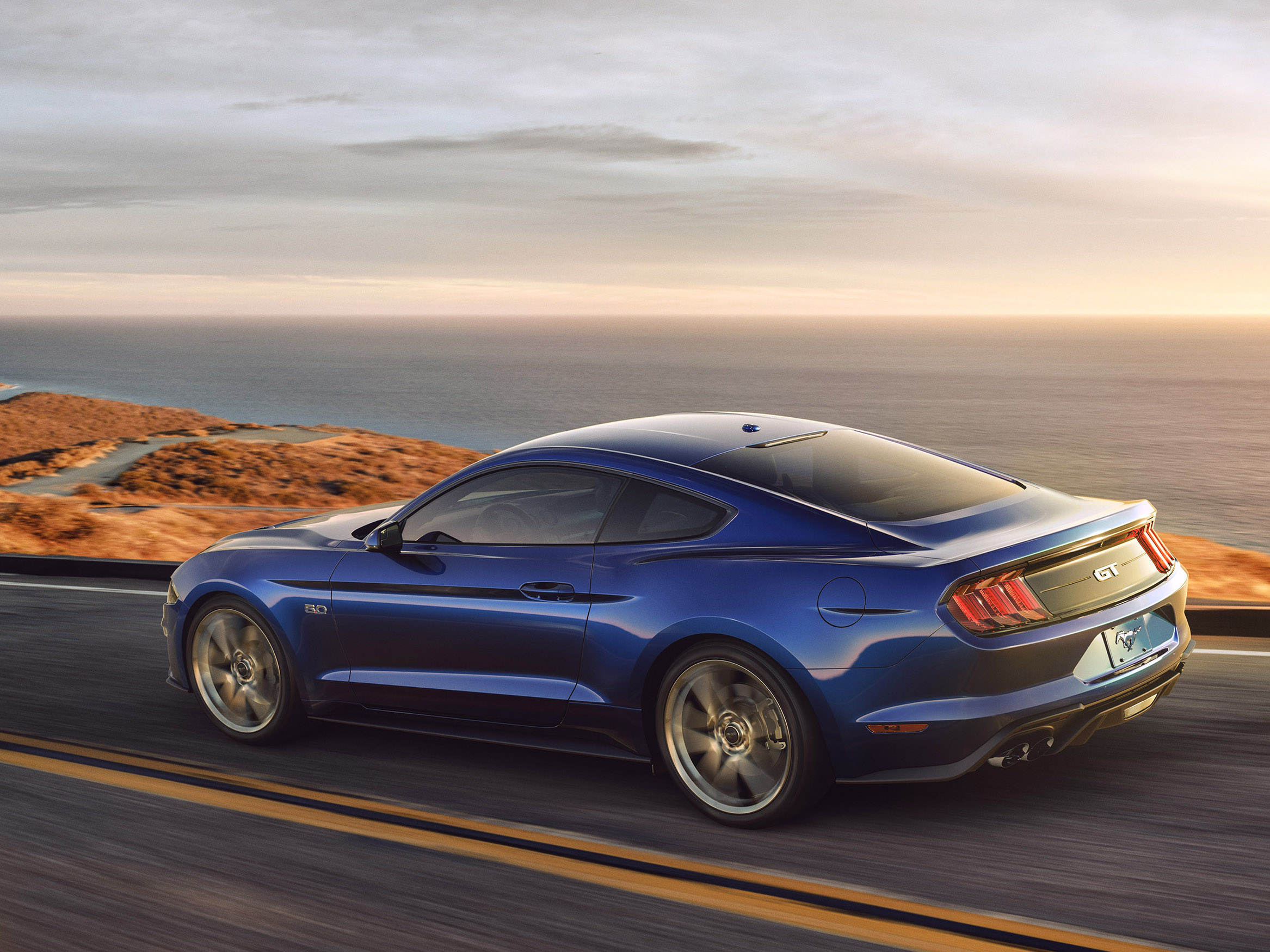
No performance numbers were supplied for either engine.
Manual versions of the Mustang will gain a new twin-disk clutch combined with a dual-mass flywheel for the six-speed self-shifter, while two-pedal versions switch over to a 10-speed automatic – a transmission co-developed with rival carmaker GM.
It should corner flatter, too, with all models gaining new shock absorbers that provide what Ford says is better ride control. Meanwhile, a new cross-axis joint in the rear suspension leads to “increased lateral stiffness”, while innovative stabiliser bars “bring sharper response and handling”.
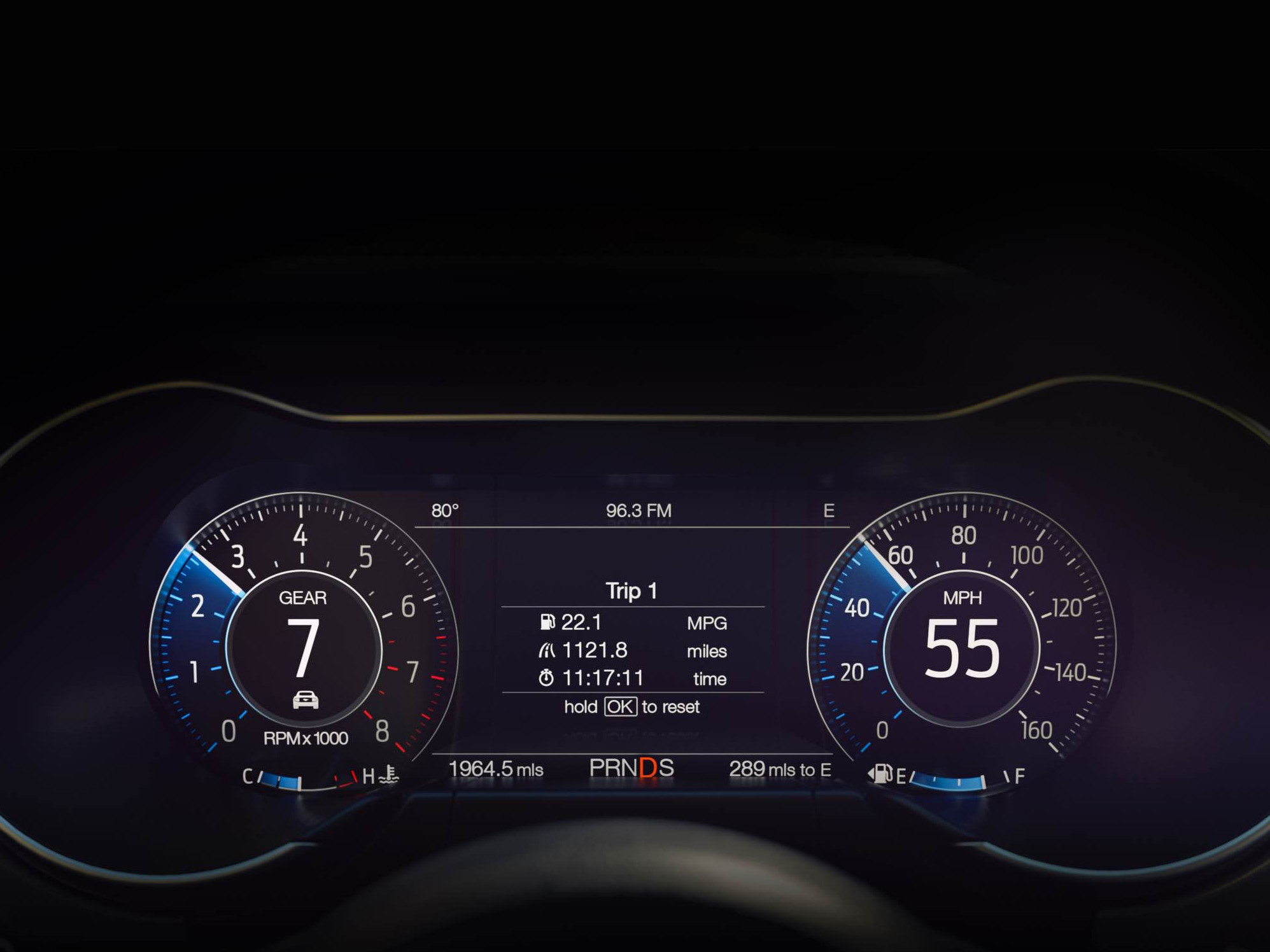
Those who tick the box for the adjustable magnetic ride suspension also get a spoiler for the rear boot lid.
Inside the Mustang there’s something of a revolution. The pony car adds a much-needed digital speedo as part of an extensive redesign of the dash that introduces with it an Audi-like full digital instrumentation via a 12-inch screen mounted in front of the driver. Sure to make the nay-sayers in Australia quiver with protest the way they did over the Mustang’s line-lock feature, the digital screen’s options include a Christmas tree-style countdown for drag strip-style launches.
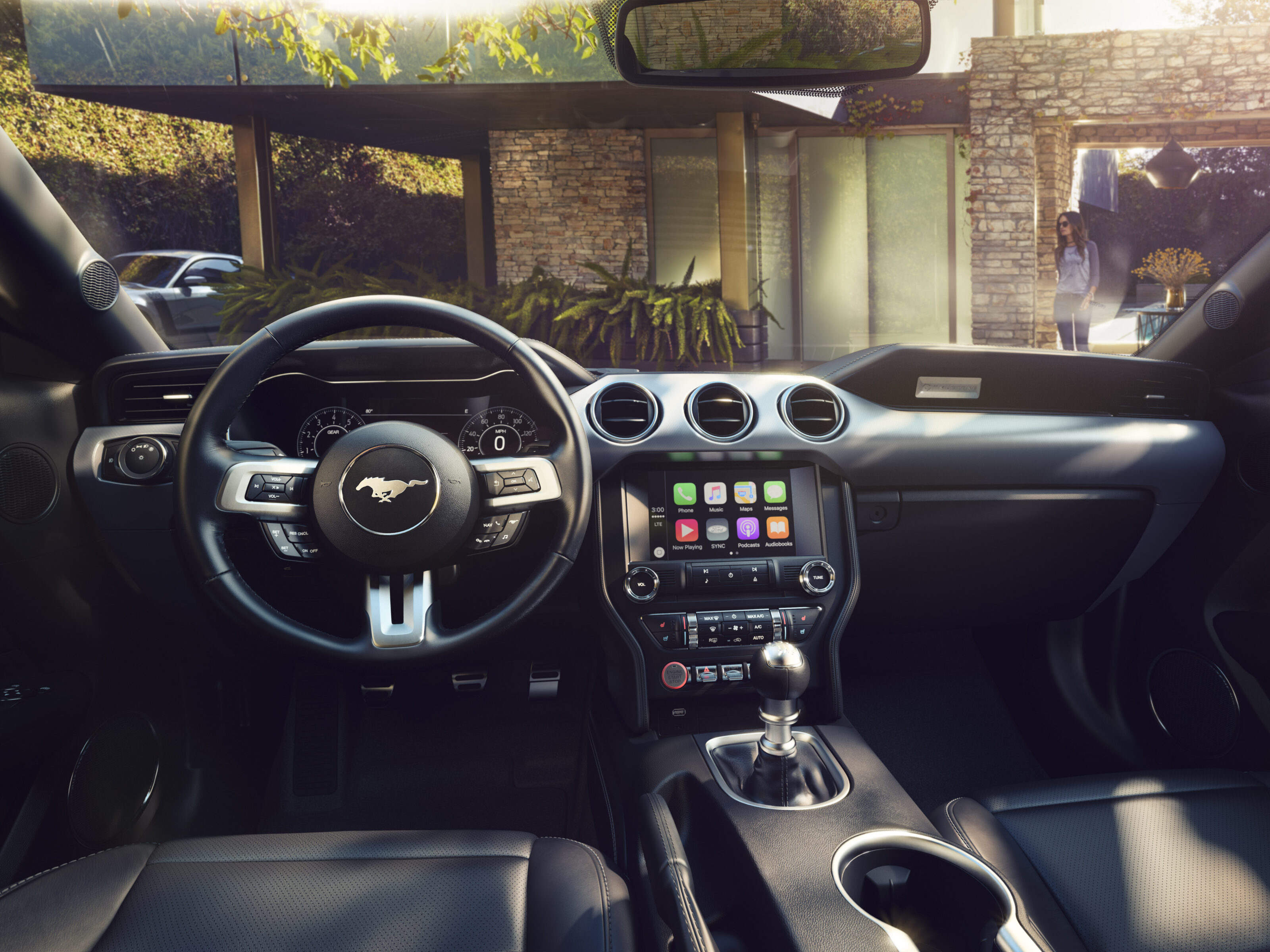
The interior also has a mild makeover to remove one of the Mustang’s constant reminders that it’s a cheap muscle car – its abundant use of hard, plasticky surfaces.
“Improved touch points and visual cues with a more premium look and feel characterize the new cockpit,” Ford said.
“The center console adds a new hand-stitched wrap with contrast stitching and padded knee bolsters while door handles, rings and bezels are finished in aluminum.
“Restyled seating surfaces feature new patterns and colour choices, the instrument panel sports an updated Mustang badge and there’s a new key fob design.”
The 2018 Ford Mustang will come with three new colour choices including one called Orange Fury. It will go on sale in the US in a couple of months’ time.

